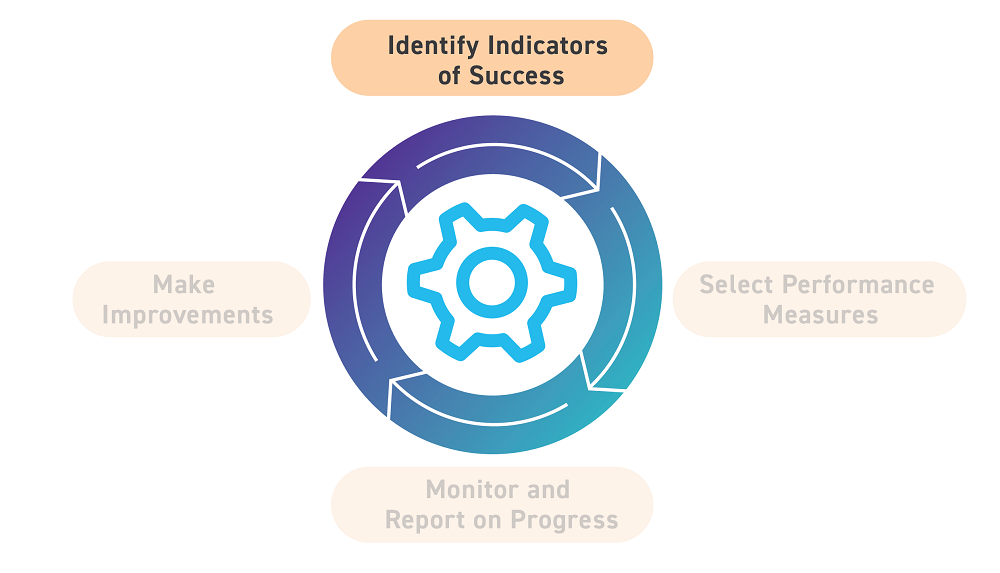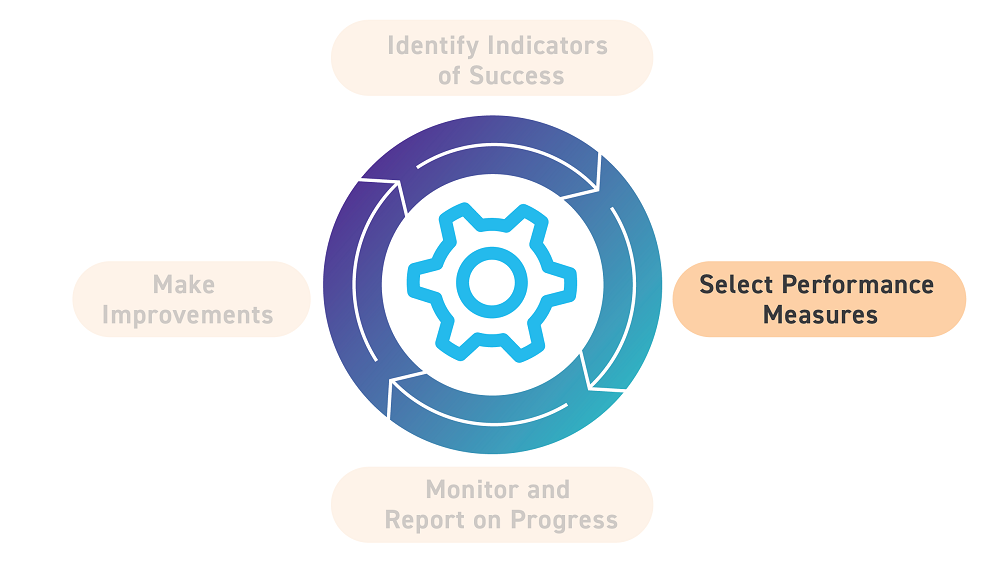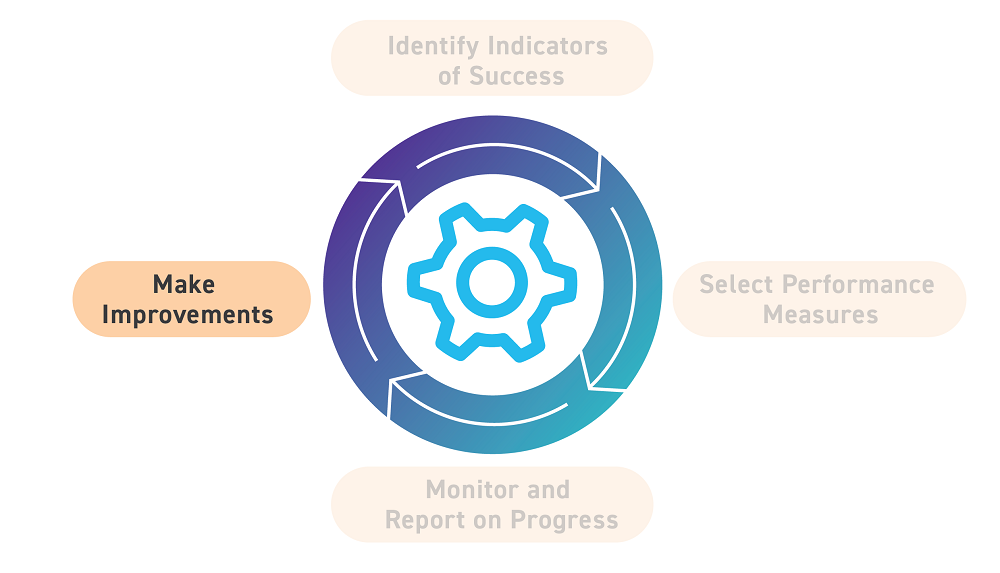
Monitoring and Maintaining Progress: How to assess progress and maintain multi-sector momentum
Monitoring the impact of interventions helps PHASTs establish shared accountability for achieving desired outcomes that are beyond the control of any single agency or individual. This module offers a set of steps to measure collective progress using a continuous performance management cycle.
 Action Steps
Action Steps To begin this process, PHAST partners will first identify what to monitor. This may include any interventions that fall under the purview of PHAST partners or the collective work of the PHAST itself. PHASTs are encouraged to consider:

For each intervention identified, PHAST partners will then discuss and collectively brainstorm what success looks like. What is the objective or goal?
Performance measures allow us to assess the capacities, processes, and outcomes relevant to the objective or indicator of success. In other words, they are the measurable components that influence, are necessary for, and lead to the program’s intended objective.

Depending on what your indicators of success are, you may want to select both short-term and long-term performance measures. See the PHAST Logic Model for examples. It can be challenging when some changes are intended to produce outcomes that won’t be detectable for a long time. To maintain PHAST momentum, data that measures both short-term and long-term outcomes should be considered.
Once performance indicators and measures have been established and data have been collected, results can be reviewed with PHAST partners on a recurring basis per the timeline established.

Partners may choose to work closely with the dedicated PHAST data analyst to review and prepare the data for presentation. During these data presentations, PHAST partners will work together to make sense of the data and collectively decide what, if any, actions need to be taken as a result.
Understanding how each intervention is performing against its intended goal allows PHASTs to recognize their collective achievements as well as make needed adjustments and identify opportunities for improvements. This notion is central to the fourth PHAST guiding principle of continuous improvement.

The performance measures that are tracked, reviewed, and presented to partners can be used to confirm or challenge decisions and strategies and can help identify potential changes in policy or program direction. These measures can also help justify investments in specific response strategies, making it easier to secure and sustain funding for successful programs.
To begin this process, PHAST partners will first identify what to monitor. This may include any interventions that fall under the purview of PHAST partners or the collective work of the PHAST itself. PHASTs are encouraged to consider:

For each intervention identified, PHAST partners will then discuss and collectively brainstorm what success looks like. What is the objective or goal?
Performance measures allow us to assess the capacities, processes, and outcomes relevant to the objective or indicator of success. In other words, they are the measurable components that influence, are necessary for, and lead to the program’s intended objective.

Depending on what your indicators of success are, you may want to select both short-term and long-term performance measures. See the PHAST Logic Model for examples. It can be challenging when some changes are intended to produce outcomes that won’t be detectable for a long time. To maintain PHAST momentum, data that measures both short-term and long-term outcomes should be considered.
Once performance indicators and measures have been established and data have been collected, results can be reviewed with PHAST partners on a recurring basis per the timeline established.

Partners may choose to work closely with the dedicated PHAST data analyst to review and prepare the data for presentation. During these data presentations, PHAST partners will work together to make sense of the data and collectively decide what, if any, actions need to be taken as a result.
Understanding how each intervention is performing against its intended goal allows PHASTs to recognize their collective achievements as well as make needed adjustments and identify opportunities for improvements. This notion is central to the fourth PHAST guiding principle of continuous improvement.

The performance measures that are tracked, reviewed, and presented to partners can be used to confirm or challenge decisions and strategies and can help identify potential changes in policy or program direction. These measures can also help justify investments in specific response strategies, making it easier to secure and sustain funding for successful programs.
Appendix C1: PHAST Logic Model
Appendix C6: Logic Model for Expanding Naloxone Administration Capacity Among Police Officers
Appendix C7: Problem-solving Models
Table 6: Indicators of Success
Table 7: Performance Measures
Table 8: Performance Monitoring and Reporting
Table 9: Celebrate Wins and Make Improvements
CDC’s Program Performance and Evaluation Office
Naloxone Distribution in the Allegheny County Jail to Prevent Overdose Data Brief
